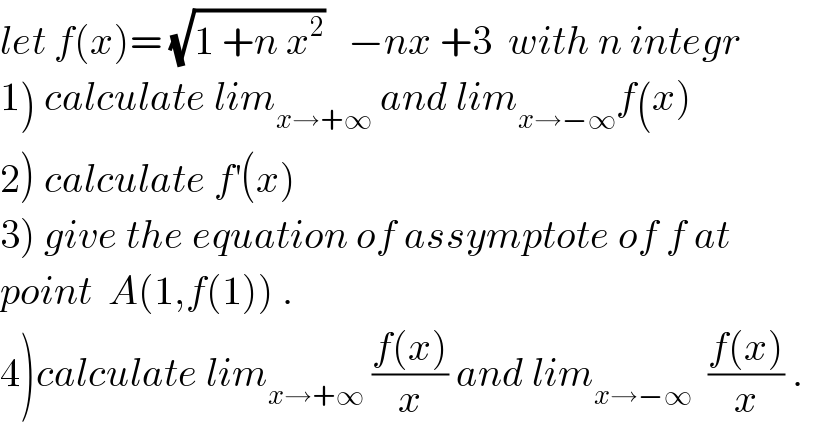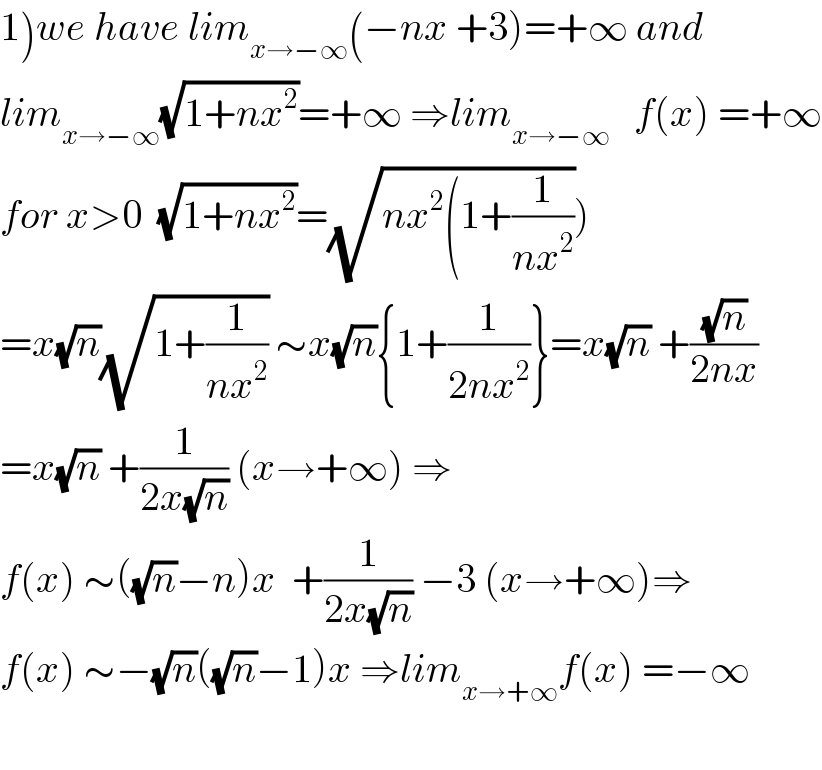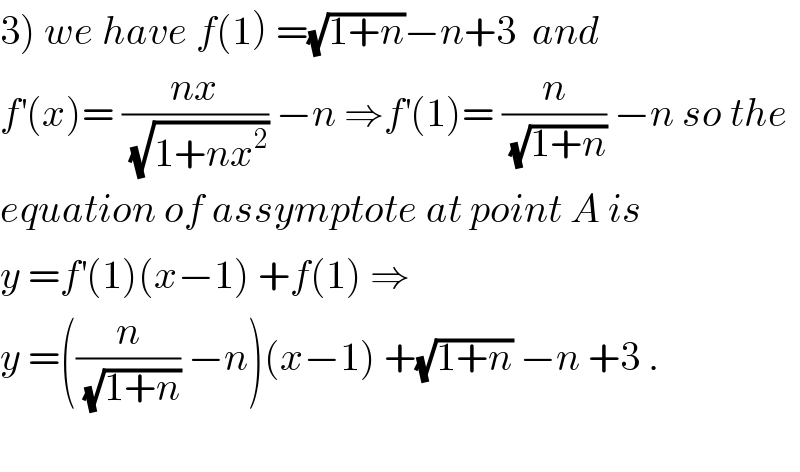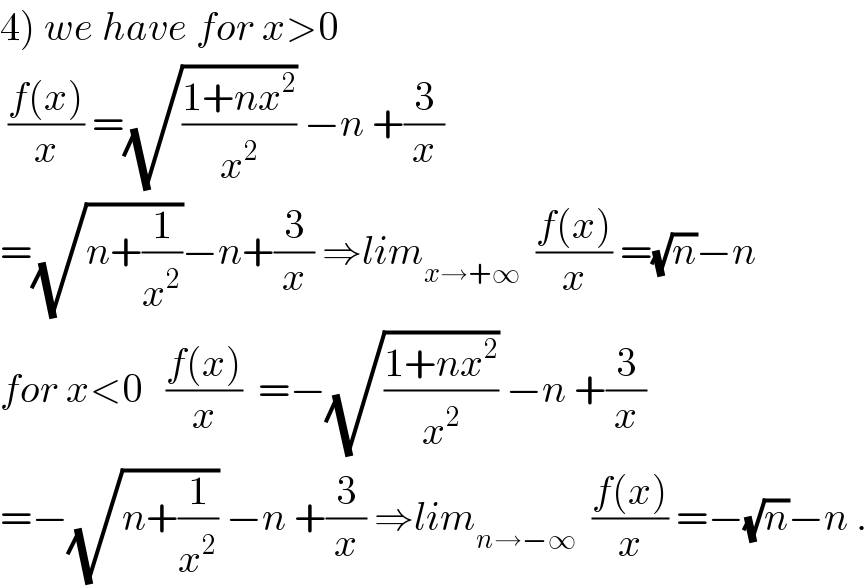
Question and Answers Forum
Previous in Relation and Functions Next in Relation and Functions
Question Number 35986 by abdo mathsup 649 cc last updated on 26/May/18

Commented by prof Abdo imad last updated on 31/Aug/18

Commented by prof Abdo imad last updated on 31/Aug/18

Commented by prof Abdo imad last updated on 31/Aug/18

Commented by prof Abdo imad last updated on 31/Aug/18

Commented by maxmathsup by imad last updated on 31/Aug/18

